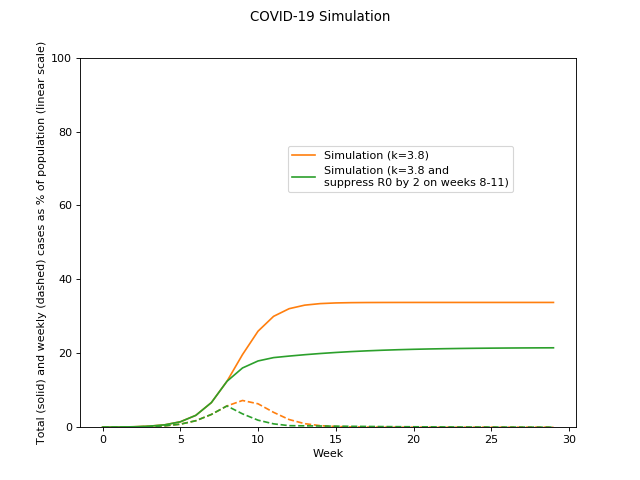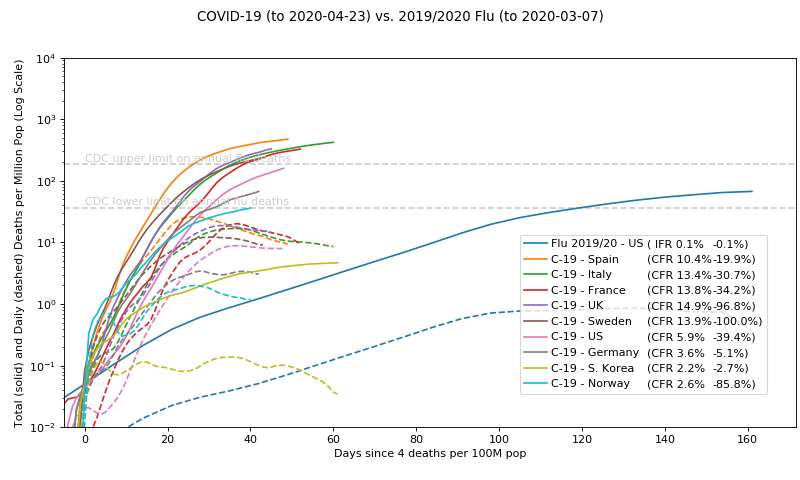Friday, April 24, 2020
Covid Update: New York; Momentum
According to the John Hopkins data, New York City has had a total of 16,388 COVID-19 deaths as of yesterday. The same data claims therein a total population of 5,803,210. (This seems a bit low to me, but presumably they are summing totals for the exact zip codes or whatever boundaries they're using for the death counts, so they should match?) Setting aside concerns of over- or under-counting for now...
That equates to 0.28% of the population of New York dead so far, or 1 in 354 people in the city.
So assuming that at most 100% of the population has been exposed, this puts a hard minimum on the IFR (infection fatality rate) of 0.28% (about 3-6x the flu).
The recent antibody survey found 21% positive. There's some delay from exposure to seroconversion, but then there's a longer delay from exposure to death, so ignoring growth for a conservative estimate we get an IFR of 1.34% (about 13-26x the flu). Assuming deaths lag more, the true IFR would be a bit higher than that.
At 21% exposed (if we believe those numbers), we're into the potential territory of herd immunity when acquired naturally.
Note from that link that the 2017-2018 flu turned around (R<1) at about 5% infected (way lower than the 29% predicted from the naive calculation using R0) and the rest of the way was carried by momentum.
That is, once you reach the point where R<1, it still takes a long time for the number of active infections to die down (meaning deaths are still accumulating, initially quite fast, even though technically you have herd immunity).
For that reason, if your end game is herd immunity, you want to lock down hard just in advance of reaching it, in order to quench the fire just at the point where it no longer has the ability to grow back.
Using the (qualitative) simulation from my previous post, here's the impact of just eye-balling the timing, assuming we can reduce the innate R by a factor of 2:
On the bright side, for New York this all implies a widely compatible strategy given where we already are (i.e., it's not too early!): Maximize the mitigations (all things considered--imo shuttering the economy goes too far) until the active infections are near zero, and then relax and see how it goes. There is reason to be optimistic that it won't come back (unless there are multiple strains that evade each other's immunity or such).
But that's just New York City...

